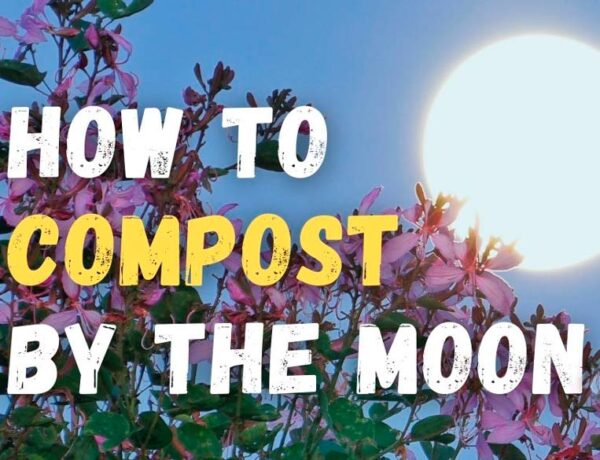I was walking home along a gravel road, houses on the left side, and a steep embankment on the right. Heavy with rain, the salmonberry bushes and young mountain ash trees arched over the roadbed like miniature lampposts. Halfway up the road, I noticed small clusters of white flowers against dark greenheart-shaped leaves…
Highbush cranberries!
I was delighted to see this incredible edible because I enjoy a good highbush cranberry sauce on brown rice and steamed veggies.
My delight dimmed when I moved in for a closer look: Many leaves were tightly curled in like my grandmother’s arthritic hands. I pinched a stem and twirled it between my fingers and flipped it over for inspection.
Darn. Just as I figured: Aphids. Light brown bugs, the size of a grain of coarse ground pepper.
Aphids suck the life out of plants. In the process, they create an icky, sticky mess. Aphids, also known as plant lice, are one of the most common insects that attack indoor plants, wildflowers, berry bushes, evergreen trees, seedlings, and greenhouse and landscape plants. They usually go for tender, new growth, but anything is game to an aphid.
[Hi, Marion Owen here. I want to let you know that this article was originally published in the Kodiak Daily Mirror, the hometown newspaper for Kodiak, Alaska. Go here to access the archive page for the list of my past columns, written each week since 1986].
What do aphids look like?
That depends. If you look at an aphid with your naked eyes, they appear like an ordinary bug.
[perfectpullquote align=”full” bordertop=”false” cite=”” link=”” color=”” class=”” size=””]Through a 10x loupe or microscope, slugs turn into subjects of science fiction movies.[/perfectpullquote]
Aphids are usually 1/8-inch or less in size, with long legs and antennae. They have tailpipe-looking thingies on their abdomen and piercing and sucking mouthparts. They are usually wingless and their color can vary—get this— from green, pink, yellow, and tan to gray, white, or black.
Now that you have a visual image of these little guys, you’ll more likely to see the damage they’ve done before you actually see them. Aphids leave a trail of tears: Yellow leaves, shriveled flowers, curled leaf tips (or entire leaves), and puckered and distorted new growth.
How chemical fertilizers bring them on!
[perfectpullquote align=”full” bordertop=”false” cite=”” link=”” color=”” class=”” size=””]Do you use Miracle-Gro? Don’t.[/perfectpullquote]
Aphids are especially attracted to lush plant growth. Many experts say that using high nitrogen, chemical fertilizers such as Miracle-Gro creates soft tissues in plants, which attracts aphids. (I’ve just given you a clue regarding aphid control).
Trouble is, where you find one aphid, you’ll usually find many. Aphids assemble in large crowds, thanks in part to their extremely high rate of reproduction and an unusual life cycle:
The females reproduce asexually, which means they either lay eggs or give birth to live young. As one cooperative extension agent described it, aphids are born with live aphids already inside them. “It’s a gardener’s nightmare!” she cried.
So when you have an aphid infestation, plants are stressed, to say the least.
So are gardeners.
Aphids damage the plant by piercing the leaves, stems, and flowers, and sucking the fluids. This weakens plants, leaving them discolored and stunted.
What to do about aphids on plants?
- Quarantine! Love your well-meaning gardening friends, but quarantine and check any plants that are gifted to you or ones that you purchase at a store or via mail-order. Plants often come with baggage in the form of pests, Trojan Horse style. Check at the stem junctions, under the leaves, and on the soil.
- Mix and match your plants. Instead of growing large clumps of one kind of plant, intersperse other kinds of plants. This tends to fool pests.
- Use an insecticidal soap spray: To make your own, fill a spray bottle with 1 tablespoon non-detergent, liquid soap (such as Dr. Bronner’s Peppermint Soap, or Murphy’s Oil Soap) in one quart of lukewarm water. Spray the tops and bottoms of infected leaves every few days.
- Employ ladybugs: One ladybug beetle can eat up to 100 aphids per day. That said, ladybugs don’t usually stick around long. You can find them online at your favorite garden center or post a “wanted” listing on the Kodiak Growers Facebook group.
- For hoophouses and greenhouses: I’ve had great success by distributing marigolds throughout the space.
- Then there’s water. You can knock aphids off plants with strong jets of water, which seems to alleviate a gardener’s frustration and anger, but you might be doing more harm than good.
- Be aware of your clothes! And while working in the presence of aphids, be careful you don’t transfer them to other plants with your hands, clothing, or tools.
The bad news: There are about 4,000 species of aphids.
The good news: Most aphids live for only three weeks and they usually feed on just one kind of plant. This means that when aphids are feasting on your currant bushes, it doesn’t mean they’ll break camp and move over to your broccoli.
One more solution: Diatomaceous earth, or DE. DE is a fine, chalk-like white powder that’s made up of crushed diatoms (fossilized, ancient phytoplankton). Diatomaceous earth is found naturally in sedimentary rock and is mined to use in industrial products, swimming pool filters, in pharmaceuticals, cosmetics, and even in food.
Like its many uses, diatomaceous earth comes in many grades. Choose “food-grade” DE for garden use.
How to apply diatomaceous earth
The easiest way to use diatomaceous earth is to simply sprinkle it on the surface of the soil, around the base of plants, under potted plants, or other areas where pest insects are present. If you sprinkle it directly on plants, keep it away from flowers, as it can harm bees and other pollinators.
For a nice even application, use a flour sifter, garden duster, or fine mesh strainer.
Diatomaceous Earth is effective against any insect that has an exoskeleton. This includes fleas, mites, lice, ants, millipedes, earwigs, cockroaches, silverfish, bed bugs, crickets, centipedes, pillbugs, sowbugs, most beetles, fungus gnat larvae, and some grubs. While it doesn’t outright kill them, many snails and slugs do not like to crawl over DE, so it can be used as a protective barrier or deterrent.
Make a diatomaceous Spray
For a broad and even application of diatomaceous earth, consider making a wet DE spray. Mixing DE with water makes it easier to treat a larger surface area. For instance, to coat an entire shrub, large tree trunk, or pathways and structures. Again, the DE won’t be effective until the water evaporates and the DE dries out. Then, the surface will be left with a fine coating of DE powder.
Here’s how to make a DE spray:
Combine 4 to 6 tablespoons of DE in each gallon of water. Mix it well and fill a spray bottle or garden pump sprayer. Shake vigorously. Spray on leaves or the target surface until it is wetted but not heavily dripping off. Focus on the most pest-prone areas, including the underside of leaves.
The DE powder may try to separate from the water, so shake your sprayer occasionally during application. The solution will begin to work as soon as it dried.
One last comment about aphids on plants: Infestations don’t just happen overnight. It pays to check your plants daily. Don’t just walk around and admire your flowers and veggies, be observant! Look for changes. If you spot a leaf that is odd or distorted, take a closer look. Prevention is the key.
SPECIAL NOTE TO READERS:
[perfectpullquote align=”full” bordertop=”false” cite=”” link=”” color=”” class=”” size=””]After writing this article, I’ve had a slight change of attitude: Aphids are not all bad.[/perfectpullquote]
In fact, aphids are a primary food source for beneficial insects and those good bugs are important to controlling other insects that damage plants.
Ladybugs and their alien-looking larvae eat aphids. So do assassin bugs, which sound vicious but also chomp mosquitoes, large beetles, and their grubs.
And lacewings, in their larval stage—one of the prettiest insects in the garden—eat hundreds of aphids a day. The larvae, sometimes called aphid lions, also have a taste for damaging whiteflies, cabbage loopers, mealybugs, and some beetles and their larvae.
Thank you for being here. I hope you find this article helpful.
Cheers,

-=-=-=-=-=-=-=-
PS Want to know how to successfully make compost and cut your garden maintenance in half? Or help your plants survive a drought? Make weeds easier to pull. After 35 years of gardening, I have learned one important thing: Compost is the answer to all your problems. Begin by taking this composting assessment. And hey, you might enjoy my Joy of Composting Facebook page. If you’d like to drop me a note, here’s my email address: marion (at) marionowenalaska.com.





No Comments